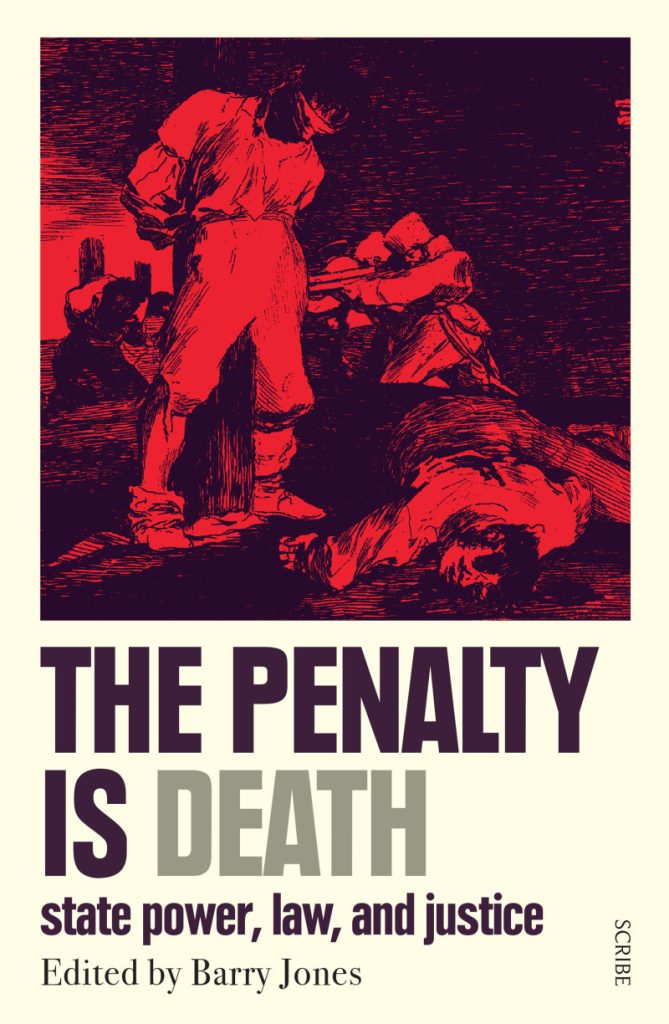FEATURE ARTICLE -
Issue 90: Dec 2022, Reviews
Editor: Barry JonesPublisher: ScribeReviewer: Matthew Coe
On 1 August 2022, the Speaker of the Queensland Parliament hosted an event commemorating 100 years since the abolition of the death penalty in Queensland. The Bar Association of Queensland and the Queensland Law Society joined with a number of other organisations to make this commemoration event possible.
The program included a keynote address by the Honourable Michael Kirby AC CMG, discussions with national and international figures opposed to the death penalty, and an analysis of the events leading up to 31 July 1922 (the day the death penalty was abolished in Queensland).
Following an excellent discussion between Kerry O’Brien and Barry Jones AC (with Jones appearing via video link), the event also launched the 2022 edition of Barry Jones’ 1968 book, The Penalty is Death, a collection of the best writing on the philosophies and arguments surrounding capital punishment.
Barry Jones has been a high-profile writer, teacher, lawyer, politician and social activist for decades. He is a former member of the Victorian and Australian Parliaments and he campaigned against the death penalty in the 1960s.
When Jones’ book was first published in 1968, a little over one year had passed after the death of Ronald Joseph Ryan, the last person hanged in Australia.
Jones dedicates the book to politicians, judges, lawyers, journalists, teachers and opinion leaders in retentionist nations,making it an appeal for them all to reflect on the shortcomings of capital punishment as a sentencing option.
The book acknowledges that the existence of the new edition is entirely due to the initiative, drive and encouragement of Stephen Keim SC, himself a committed advocate against capital punishment.
The collection is broken into five parts — a general overview, the case against capital punishment, the case for it, a collection of eyewitness accounts of executions, and a section on the recent fate of the death penalty in the English speaking world. The last section is written by Jones, himself.
The case for abolition includes arguments from Cesare Beccaria, Charles Dickens, Clarence Darrow, extracts from Thorsten Sellin’s book, The Death Penalty, and a translation of Albert Camus’ Reflections on the Guillotine, among other writings.
The arguments in favour of abolishing the death penalty often traverse similar terrain. Some appeal to logic, and others to more human feelings. Some acknowledge the difficulties involved in reaching a settled position on capital punishment.
Throughout the book, there is frequent reference to the alleged deterrent effect of capital punishment; the alleged need for capital punishment as a remedy that allows murderers to fully atone for their crimes; and economic arguments in favour of executions. The case against the death penalty generally outlines these arguments and, persuasively, resists them.
In relation to the retention case, Jones records an editor’s dilemma. Specifically, the difficulty he had in assembling a publishable collection of strongly retentionist material for the first edition in 1968. As a result, there are fewer contributions in favour of retention. They include arguments from Edward J Allen, J Edgar Hoover and an editorial from the Geelong Advertiser.
Of the pro-capital punishment advocates, the most persuasive are those that invoke the experiences of victims, their relatives, and those working with them in law enforcement to solve the most serious crimes. Regardless of one’s personal views, in the case of the most heinous crimes, it can be difficult to sustain a view that all criminals in all cases deserve their chance at rehabilitation or redemption.
The section on eyewitness accounts is brief and describes hangings and guillotine executions. These accounts imagine the anticipation, certainty and hopelessness which condemned prisoners must feel before their sentences are carried out. Mercifully, the book spares readers the macabre details of the more creative forms of capital punishment that have been available in the past.
The book concludes with an exploration of the recent fate of the death penalty in the United Kingdom, Australia, New Zealand, Canada, South Africa, the United States and Ireland.
The most comprehensive discussion in this section relates to the campaign against the death penalty in Victoria in the 1960s. Jones’ discussion of the Bolte government’s reasons for not commuting the death sentence against Robert Joseph Ryan is interesting and insightful.
Overall, The Penalty is Death is an excellent starting point for understanding some of the historical arguments surrounding capital punishment.
For Australians, these arguments may now appear to be moot. Indeed, Jones confirms the prohibition on the death penalty was extended with the Commonwealth Crimes Legislation Amendment (Torture Prohibition and Death Penalty Abolition) Act 2010, to prevent the reintroduction of death penalties in Australian states and territories.
But capital punishment persists in other parts of the world and has the potential to touch Australian lives. Recent high-profile campaigns against the death penalty in Singapore, Iran and other parts of the world make it clear the death penalty remains an important topic of debate and something that can impact upon Australians.
More than 50 years after its first publication, Jones’ book is still a valuable resource for advocates against the death penalty across the world.



